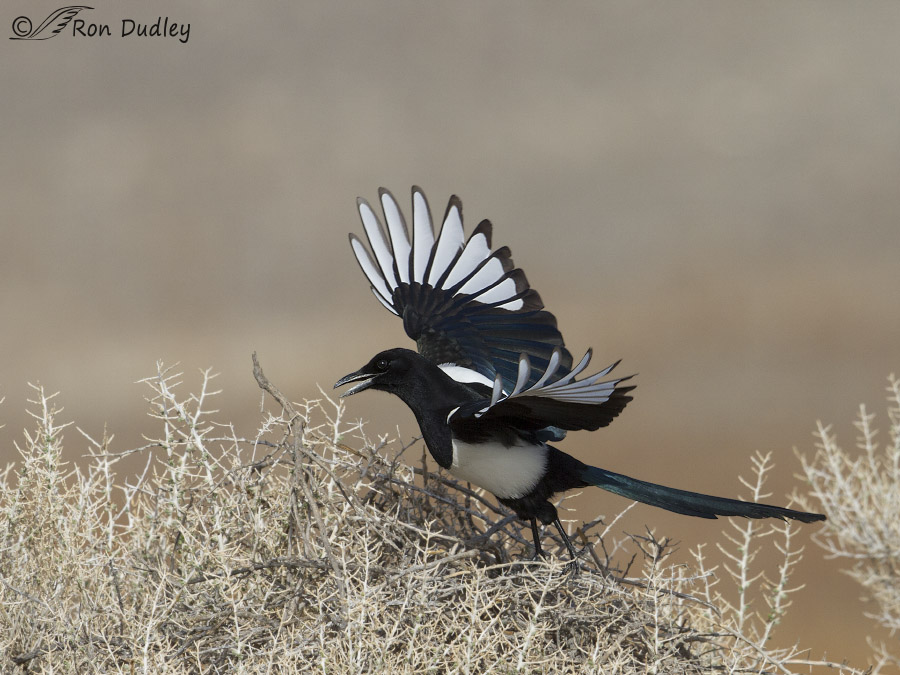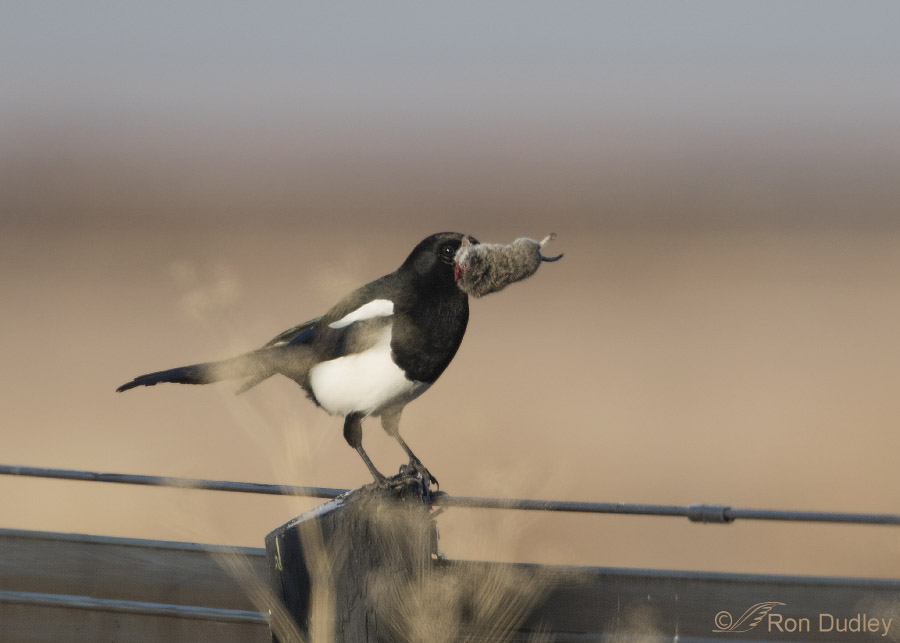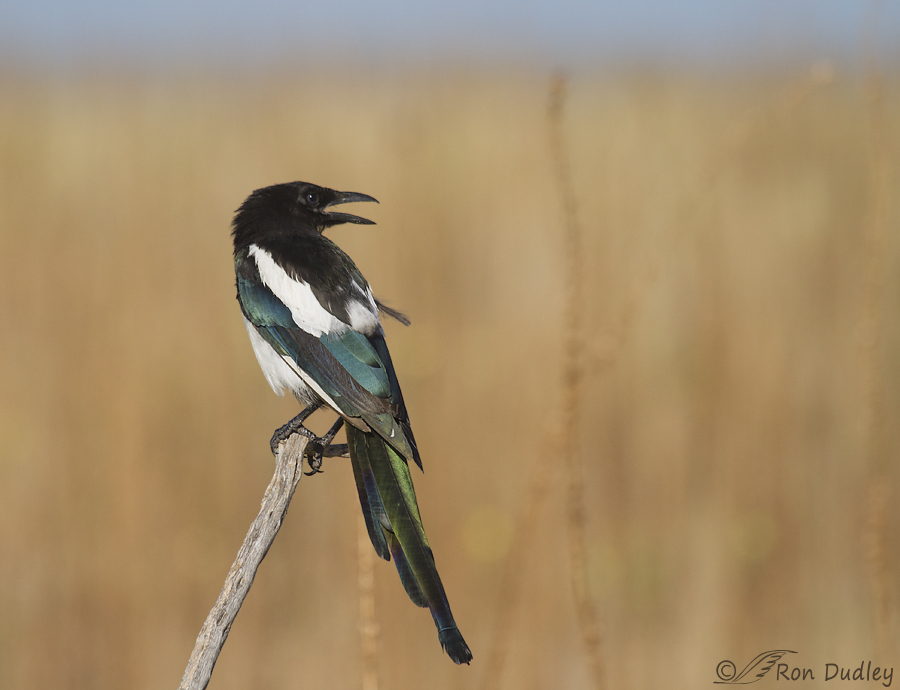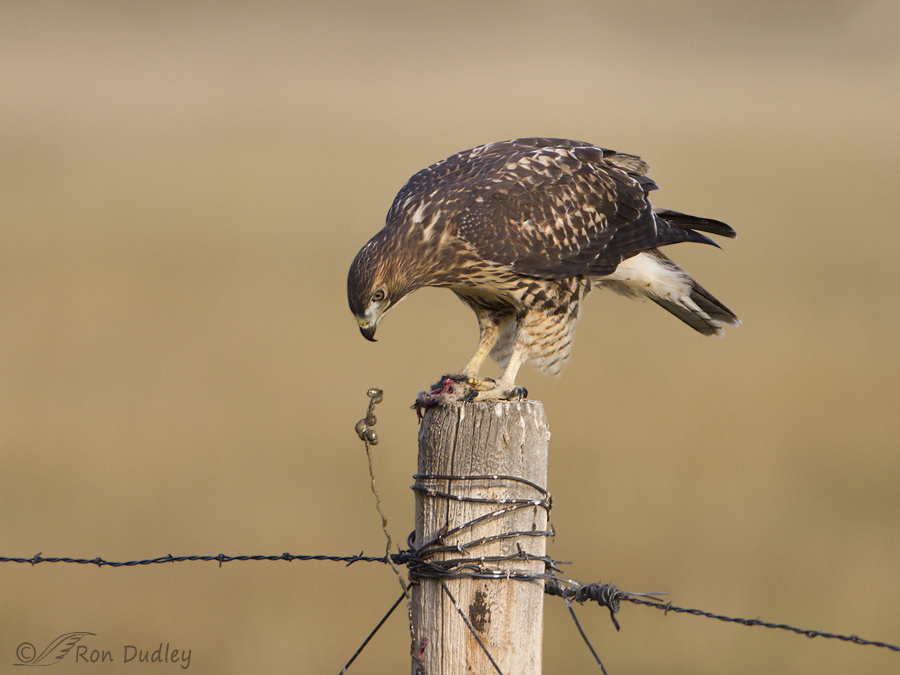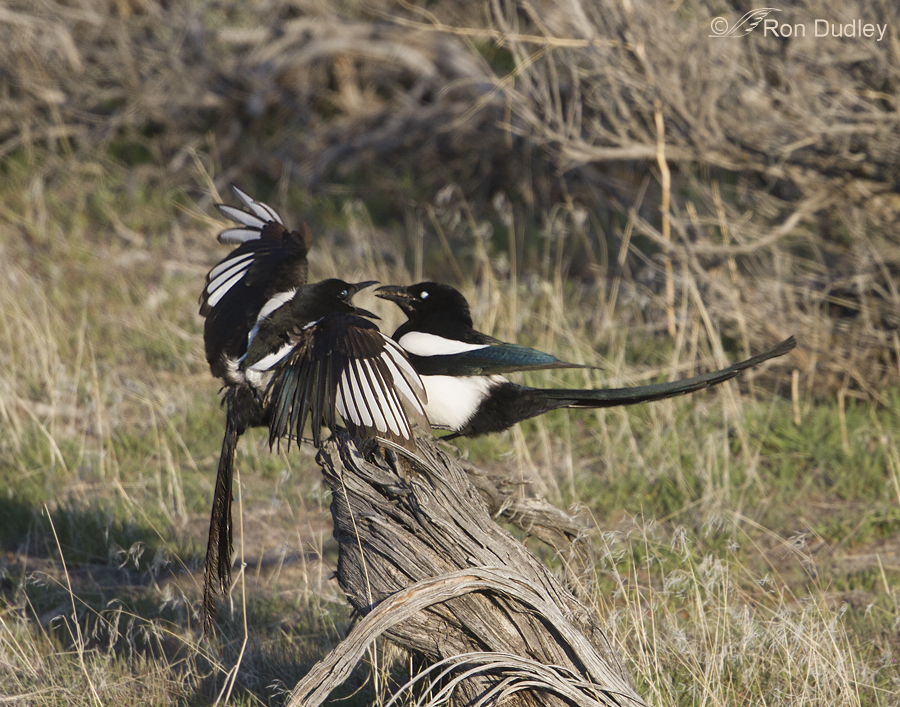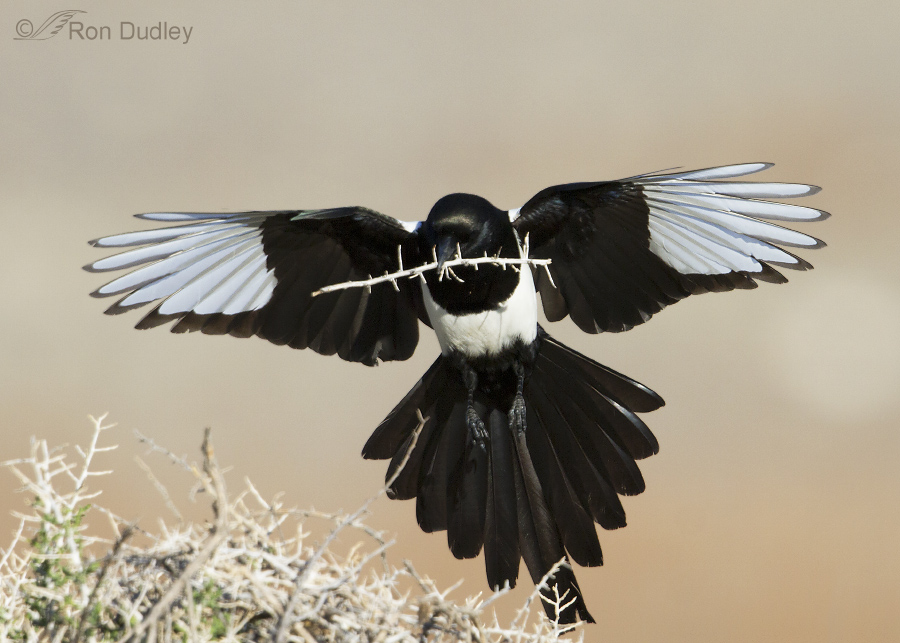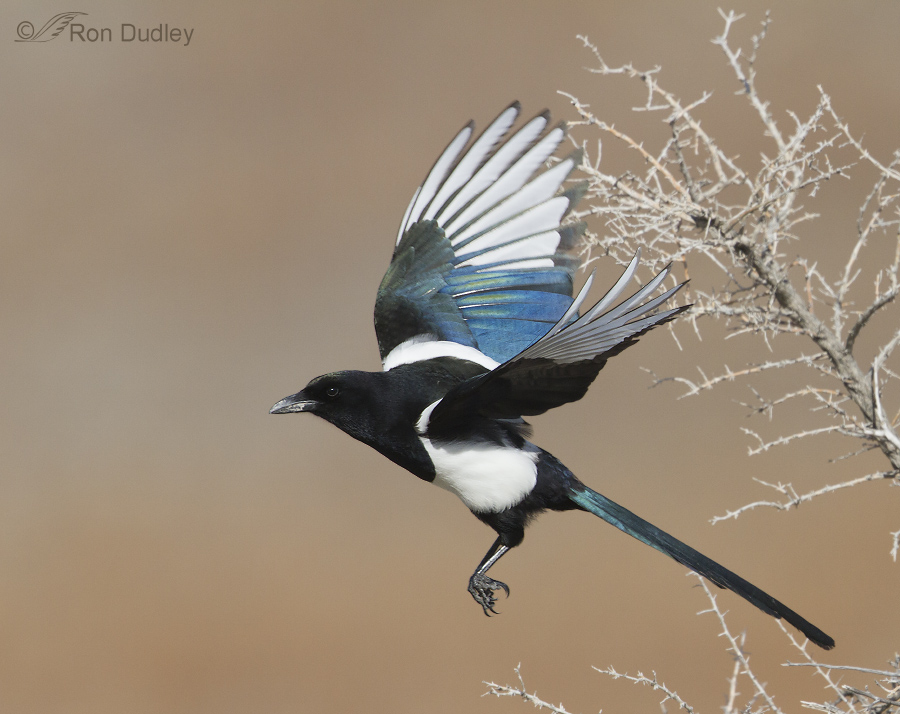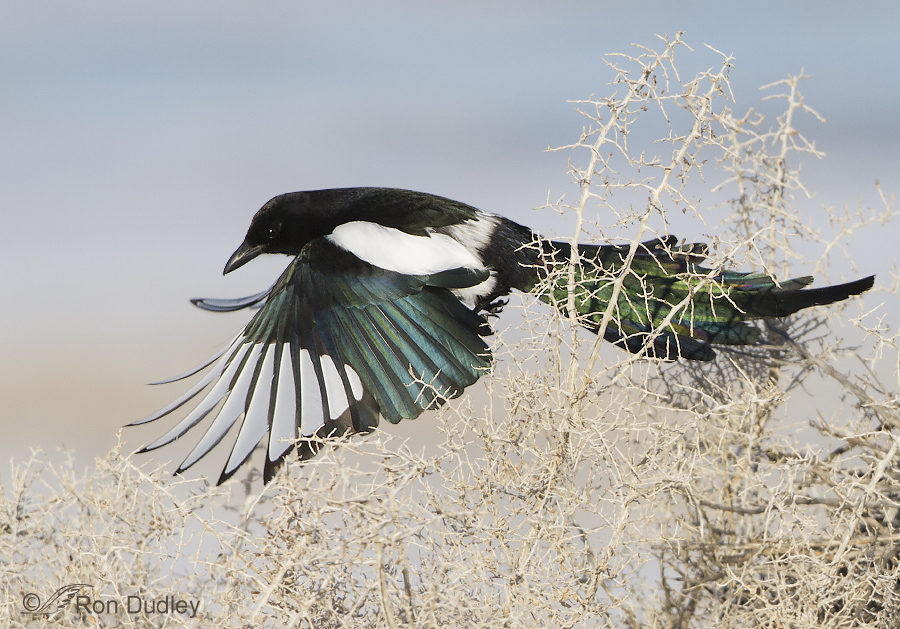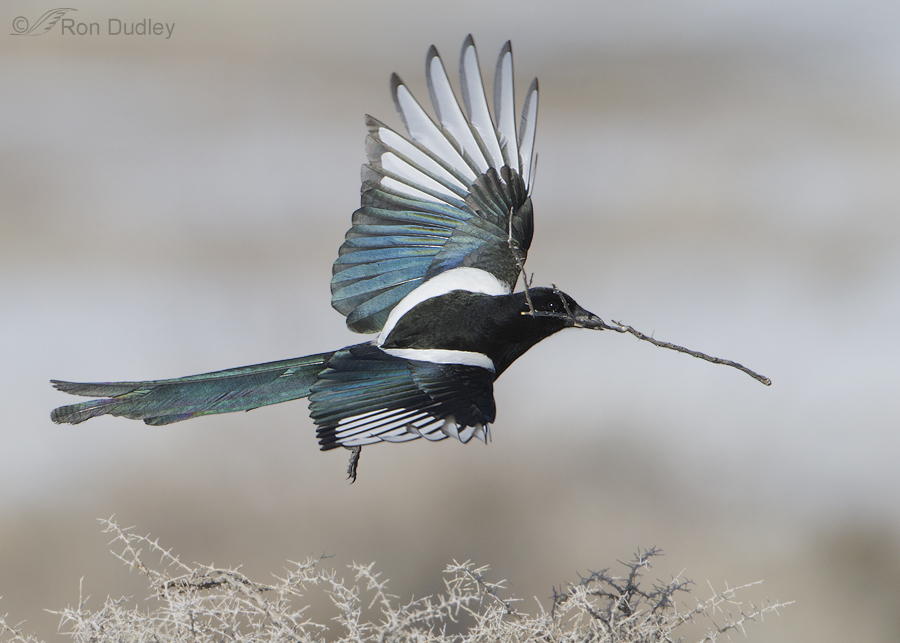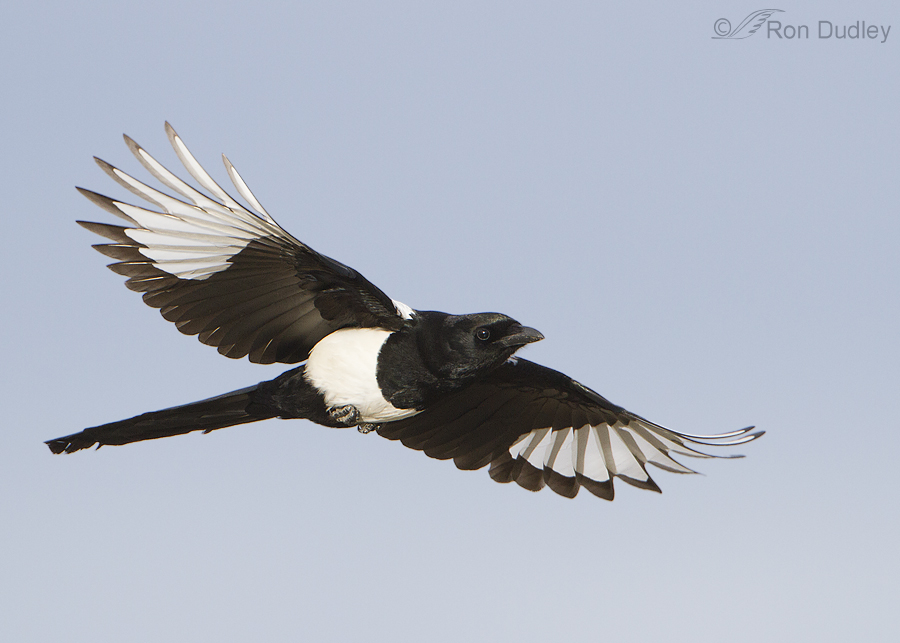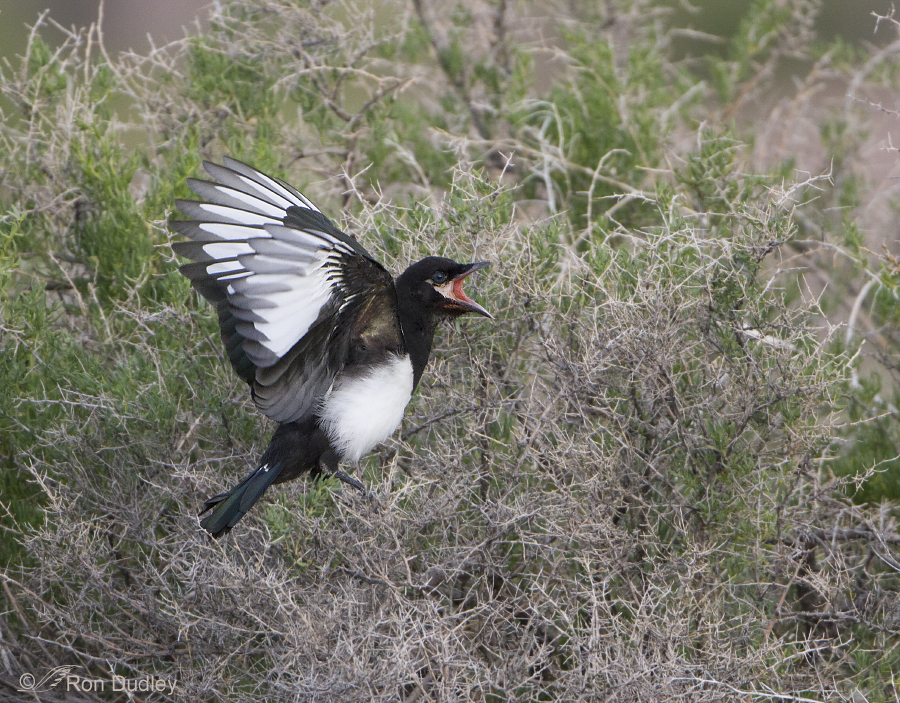Magpie In Flight In Magical, Foggy Light
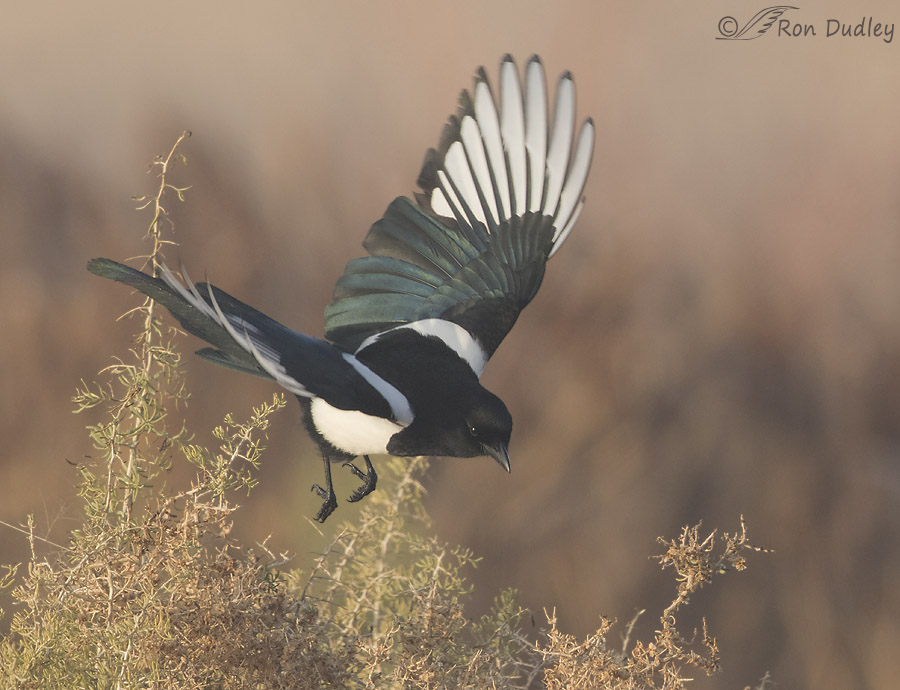
Under the right conditions I like what fog can do to light when it isn’t too thick. Antelope Island at dawn this morning was a jumble of moving, thick pockets of fog. I drove around in an attempt to find some clear spots with birds present but when I would find some sun it wouldn’t take long for the fog to envelope me again. But in one spot, just for a couple of minutes, the effect of the fog on the light was dreamy and ethereal and I loved it.


